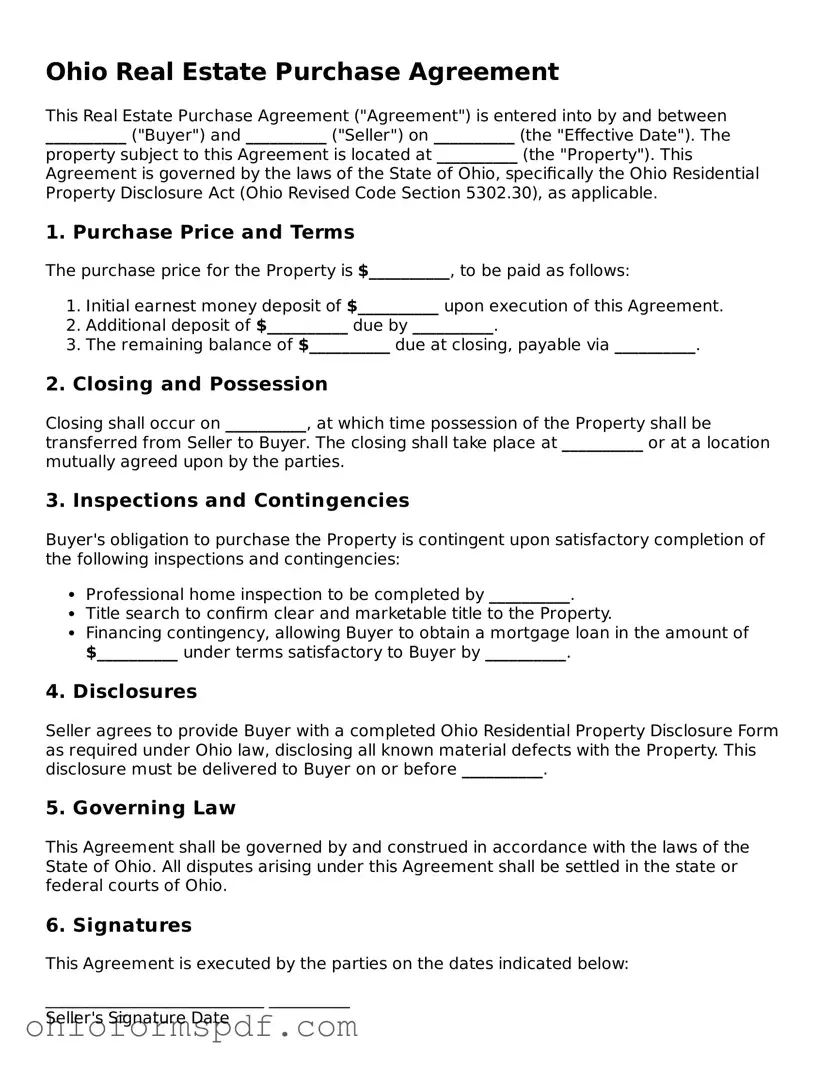Ohio Real Estate Purchase Agreement
This Real Estate Purchase Agreement ("Agreement") is entered into by and between __________ ("Buyer") and __________ ("Seller") on __________ (the "Effective Date"). The property subject to this Agreement is located at __________ (the "Property"). This Agreement is governed by the laws of the State of Ohio, specifically the Ohio Residential Property Disclosure Act (Ohio Revised Code Section 5302.30), as applicable.
1. Purchase Price and Terms
The purchase price for the Property is $__________, to be paid as follows:
- Initial earnest money deposit of $__________ upon execution of this Agreement.
- Additional deposit of $__________ due by __________.
- The remaining balance of $__________ due at closing, payable via __________.
2. Closing and Possession
Closing shall occur on __________, at which time possession of the Property shall be transferred from Seller to Buyer. The closing shall take place at __________ or at a location mutually agreed upon by the parties.
3. Inspections and Contingencies
Buyer's obligation to purchase the Property is contingent upon satisfactory completion of the following inspections and contingencies:
- Professional home inspection to be completed by __________.
- Title search to confirm clear and marketable title to the Property.
- Financing contingency, allowing Buyer to obtain a mortgage loan in the amount of $__________ under terms satisfactory to Buyer by __________.
4. Disclosures
Seller agrees to provide Buyer with a completed Ohio Residential Property Disclosure Form as required under Ohio law, disclosing all known material defects with the Property. This disclosure must be delivered to Buyer on or before __________.
5. Governing Law
This Agreement shall be governed by and construed in accordance with the laws of the State of Ohio. All disputes arising under this Agreement shall be settled in the state or federal courts of Ohio.
6. Signatures
This Agreement is executed by the parties on the dates indicated below:
___________________________ __________
Seller's Signature Date
___________________________ __________
Buyer's Signature Date
